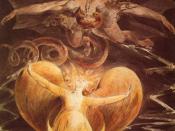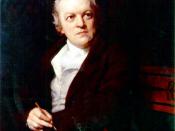William Blake wrote ?The Chimney Sweeper?, in 1789. This poem tells the story of a young chimneysweeper and his dream. The analysis will cover the poem's figurative language and it's meanings and goals.
Lines 1-4 The first line does not include any poetic element. It hit with the reality and the brutality of its meaning. The second line's tone however is enough to be a verse "while yet my tongue". Blake, by omitting the first letter of the word sweep in the third verse, seemingly recreates the child's lisp so as to highlight his innocence and young age. In those first two lines, we see an image of an anguished child in a state of agony or even in a state of corruption.
The child does not languish in emotion; he quickly states that his mother is dead and that his father sold him at a tender age. He again is very accepting of the fact that he cleans our chimneys and yet sleeps in their dirt.
We are forced to look at this child misfortunately.
In line 3 the poem states, ? Could scarcely cry weep weep weep?. The meaning behind the words proves how young this little boy was, and brings compassion to the reader. The child attempt at saying, ?Sweep! Sweep!? which was the chimney sweeper?s street cry. This section shows that children have a very positive outlook on life. They make the best of their lives and do not fear death.
The poem tells the story of what happened to many young boys during this time period. Often, young boys were sold for the soul purpose of cleaning chimneys because of their small size. These children were exploited and lived a meager existence that was socially acceptable at the time. Voices the evils of this acceptance...


